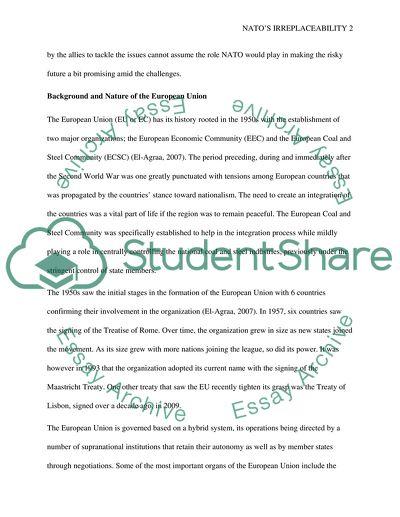Cite this document
(NATOs Irreplaceability Term Paper Example | Topics and Well Written Essays - 3750 words, n.d.)
NATOs Irreplaceability Term Paper Example | Topics and Well Written Essays - 3750 words. Retrieved from https://studentshare.org/politics/1751902-analyze-accomplishments-nato-has-made-in-recent-years-to-argue-for-or-against-the-eu-substituting-nato-in-the-years-to-come
NATOs Irreplaceability Term Paper Example | Topics and Well Written Essays - 3750 words. Retrieved from https://studentshare.org/politics/1751902-analyze-accomplishments-nato-has-made-in-recent-years-to-argue-for-or-against-the-eu-substituting-nato-in-the-years-to-come
(NATOs Irreplaceability Term Paper Example | Topics and Well Written Essays - 3750 Words)
NATOs Irreplaceability Term Paper Example | Topics and Well Written Essays - 3750 Words. https://studentshare.org/politics/1751902-analyze-accomplishments-nato-has-made-in-recent-years-to-argue-for-or-against-the-eu-substituting-nato-in-the-years-to-come.
NATOs Irreplaceability Term Paper Example | Topics and Well Written Essays - 3750 Words. https://studentshare.org/politics/1751902-analyze-accomplishments-nato-has-made-in-recent-years-to-argue-for-or-against-the-eu-substituting-nato-in-the-years-to-come.
“NATOs Irreplaceability Term Paper Example | Topics and Well Written Essays - 3750 Words”, n.d. https://studentshare.org/politics/1751902-analyze-accomplishments-nato-has-made-in-recent-years-to-argue-for-or-against-the-eu-substituting-nato-in-the-years-to-come.


